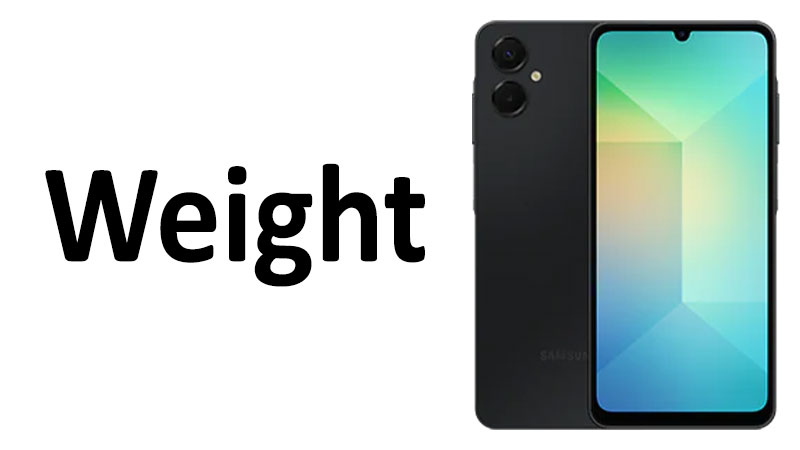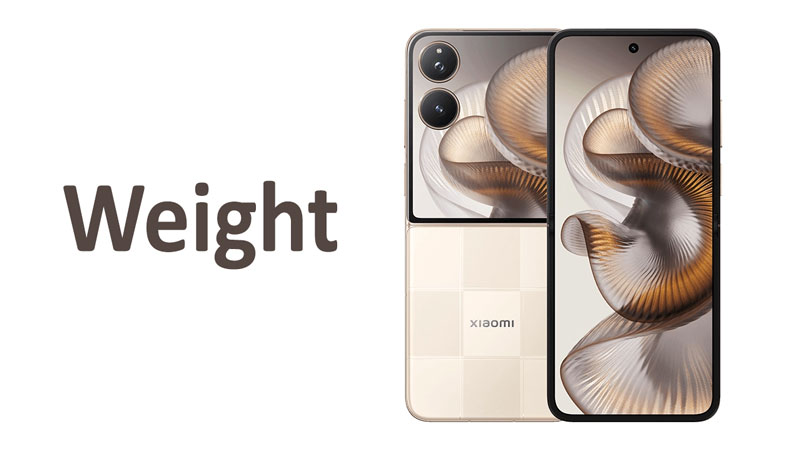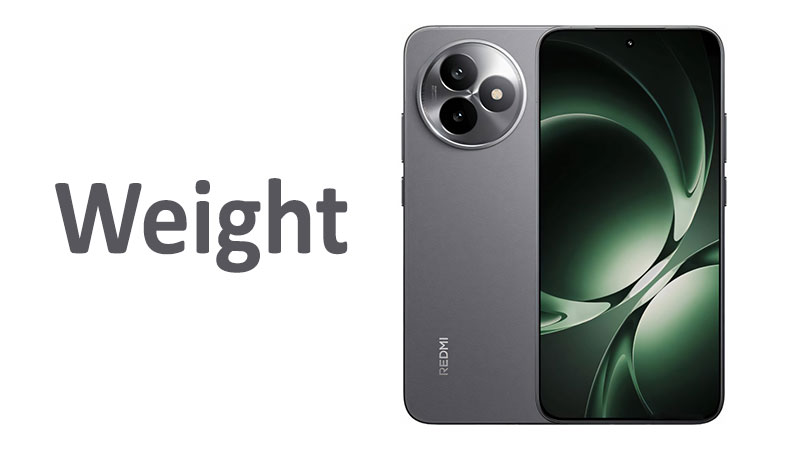The Samsung Galaxy A06 5G weight is a critical specification for potential buyers focusing on portability and comfort. This detailed analysis examines the exact measurement of 191 grams (6.74 ounces). We explore how this figure impacts the phone’s ergonomics and daily usability. We also perform specialized comparisons against previous models and competing budget 5G devices. Understanding the phone’s physical statistics helps consumers make informed purchasing decisions.
The Significance of Phone Weight in 2024
Modern smartphones must strike a careful balance between features and physical form. Consumers expect large screens, massive batteries, and advanced components like 5G connectivity. These features typically add bulk and weight to the device structure. The challenge for manufacturers like Samsung is minimizing this weight gain without sacrificing durability or performance. The resulting weight determines long-term comfort and pocketability.
The Galaxy A series targets the budget-conscious segment of the market. This often means plastic construction, which helps manage cost and sometimes weight. However, the requirement for a large display and a high-capacity battery often pushes the final weight higher. Our deep dive into the A06 5G’s weight profile provides essential context for its place in the 5G entry-level category.
The Weight of the Samsung Galaxy A06 5G: Grams and Ounces
The precise physical specification of the Samsung Galaxy A06 5G places it firmly within the standard range for large-screen budget smartphones. The phone measures 191 grams, which converts to 6.74 ounces. This number represents the device’s mass ready for use, including all internal components, the battery, and the non-removable casing.
Precision in Measurement: 191 Grams
The 191-gram measurement is an important data point. It positions the Galaxy A06 5G as a relatively light device in its class, especially for a 5G phone with a large display. Most devices featuring screens 6.6 inches or larger and a high-capacity battery typically weigh between 190 and 210 grams. Samsung engineers clearly focused on material optimization to achieve this lower end of the weight spectrum.
This weight class indicates a focus on user comfort during extended use. Holding a device above 200 grams for a long period can cause wrist fatigue. The 191-gram threshold suggests Samsung successfully managed the internal components. This includes the 5G modem and necessary heat dissipation layers, without significantly increasing the mass.
Converting to Ounces: 6.74 Ounces
For consumers in regions using imperial measurements, the weight converts to 6.74 ounces. Understanding this measure is crucial for general comparison with other tech products. A weight of 6.74 ounces feels substantive in the hand, but it avoids feeling unnecessarily heavy or burdensome. It suggests quality materials while retaining a sense of lightness.
This conversion aids in visualizing the phone’s mass alongside everyday objects. It is roughly equivalent to a standard baseball or a small apple. This familiar comparison helps users gauge the phone’s presence in a pocket or handbag. The balance between 5G features and a sub-7-ounce weight is a noteworthy engineering achievement for a value-oriented phone.
Ergonomics and Handling: The Impact of 191 Grams
Ergonomics describes how comfortable and efficient a device is to use. The 191-gram weight of the Samsung Galaxy A06 5G plays a significant role in this area. Weight interacts closely with the phone’s dimensions and its overall balance. A heavy phone can feel fatiguing, while a phone that is too light might feel cheap or insubstantial.
One-Handed Use and Pocketability
The 191g weight contributes positively to both one-handed use and pocketability. Since the phone likely features a large display (typical for the A-series), a lower weight is essential. It minimizes strain when users stretch their thumbs across the screen. This allows for longer browsing or scrolling sessions without immediate discomfort.
In terms of pocketability, a lighter device is always preferable. It feels less noticeable when carried in trousers or jacket pockets. Furthermore, lighter phones put less stress on the phone’s casing and the user’s clothing over time. This makes the A06 5G a good choice for users prioritizing everyday comfort and mobility.
Material Science and Weight Distribution
Samsung likely utilized high-grade polycarbonate (plastic) for the back panel and frame of the A06 5G. This material is lighter than metal or glass, which premium phones use. Plastic is a key factor in achieving the 191g weight target. It also offers excellent durability against minor drops and scratches, which is a common advantage in the budget segment.
Weight distribution is equally important as the total weight. If the phone’s mass concentrates at one end, it feels top-heavy and unstable. If the weight is distributed evenly, the phone feels balanced and secure, even at 191 grams. Samsung typically designs its devices to distribute the battery and internal components centrally. This ensures the 191g feels proportional across the entire device structure.
Specialized Weight Comparisons (Previous Models and Competitors)
Analyzing the Samsung Galaxy A06 5G weight in isolation provides only half the story. A true understanding of its competitiveness requires direct comparison with its immediate predecessors and key budget 5G rivals. This comparative analysis highlights Samsung’s design choices in transitioning the A-series to 5G connectivity.
| Device | Weight (Grams) | Weight (Ounces) | Connectivity | Battery Capacity (mAh) |
|---|---|---|---|---|
| Samsung Galaxy A06 5G | 191 g | 6.74 oz | 5G | ~5000 mAh (Inferred) |
| Samsung Galaxy A05 (4G) | 195 g | 6.88 oz | 4G | 5000 mAh |
| Samsung Galaxy A05s (4G) | 194 g | 6.84 oz | 4G | 5000 mAh |
| Samsung Galaxy A15 5G | 200 g | 7.05 oz | 5G | 5000 mAh |
Compared to the Samsung Galaxy A05 Series
The most relevant comparison is with the Samsung Galaxy A05 and the A05s. Both of these are 4G-only models. The Galaxy A05 weighs 195 grams. The Galaxy A05s weighs 194 grams. The new Galaxy A06 5G is significantly lighter at 191 grams.
This 3 to 4-gram reduction is quite remarkable. Integrating 5G components usually requires additional antennas, shielding, and cooling solutions, which typically increase mass. Samsung has successfully reduced the phone’s structural weight, likely through optimized plastic injection molding or slightly thinner materials. This weight saving is a significant win for the A06 5G. It delivers the next-generation speed without penalizing the user with extra bulk compared to the 4G predecessors.
Furthermore, consider the step-up model, the Galaxy A15 5G. This phone weighs 200 grams. The A06 5G offers a nine-gram weight advantage over the slightly higher-spec A15 5G. This difference is noticeable in hand, solidifying the A06 5G’s position as the lighter, more budget-friendly 5G option in Samsung’s portfolio.
Weight Against Key Budget 5G Rivals
In the fiercely competitive budget 5G market, weight becomes a key differentiator. Many competing devices from brands like Xiaomi, Motorola, and Realme often cross the 200-gram mark, especially if they pack a 5000 mAh or larger battery. A weight of 191 grams gives the Samsung Galaxy A06 5G a competitive edge in perceived comfort and handling.
A slightly lighter weight can suggest a simpler component structure. However, in this budget context, it mainly signifies excellent optimization of the plastic chassis. The 191-gram figure allows the Samsung Galaxy A06 5G to stand out as one of the sleekest 5G options in its price bracket. Consumers looking for a non-bulky 5G experience will find this feature highly attractive. This weight profile allows the phone to cater to younger users and those who use their phones primarily for communication and media consumption.
The Battery Factor: A Key Weight Contributor
The battery is almost always the heaviest single component in a smartphone. Given the 191g weight, the Samsung Galaxy A06 5G almost certainly features a large battery, likely 5000 mAh. This capacity is the standard for the A-series and crucial for supporting the power demands of 5G connectivity.
If the phone maintains a 5000 mAh battery while hitting 191 grams, the power-to-weight ratio is highly efficient. This means Samsung optimized every other component to compensate for the necessary battery weight. A phone with a 6.7-inch screen and a 5000 mAh battery coming in under 195 grams is a strong statement about the efficiency of its design. It assures users of long battery life without sacrificing portability.
Pros and Cons of the 191g Weight
Understanding the advantages and disadvantages associated with the 191-gram weight helps consumers align the phone’s physical properties with their personal needs.
Pros of the 191 Grams Weight
Firstly, reduced weight directly translates to enhanced portability. The phone is easier to carry in pockets, minimizing the strain on clothing. Secondly, the weight improves long-term comfort. Users who spend hours scrolling social media, watching videos, or engaging in long phone calls will experience less hand fatigue. The 191g figure makes the device feel agile and manageable.
Thirdly, the weight implies a streamlined design. Achieving this low mass with a large screen and battery requires tight component integration and thin walls. This efficient use of space is a sign of good modern manufacturing practices. Finally, in terms of safety, a lighter phone inflicts less impact damage if dropped, potentially reducing the risk of a cracked screen or internal damage.
Cons of the 191 Grams Weight
While lightness is largely positive, it carries certain drawbacks, particularly concerning build perception. Some users associate greater weight with higher material quality and premium feel. The use of light plastic needed to achieve 191 grams might feel less premium than the glass and metal found in flagship models. This perception is subjective but important for many buyers.
A second potential con relates to durability. While polycarbonate is resilient, a very thin plastic structure might be more prone to flexing under pressure compared to a heavier, more rigid aluminum frame. Users must handle the phone carefully. This light construction may also slightly complicate thermal management if the 5G chipset runs hot under heavy load. However, for a budget chip, this is usually less of a concern.
Buyer’s Guide: Important Weight-Related Considerations
A prospective buyer considering the Samsung Galaxy A06 5G must look beyond the 191g statistic itself. The weight must be considered in the context of accessories and intended daily use. The final weight carried by the user is often higher than the advertised specification.
The Case Conundrum: Adding Bulk
Nearly all smartphone owners use a protective case. This addition immediately alters the phone’s dimensions and weight. A typical silicone or thin plastic case adds between 20 and 40 grams. Therefore, the total carrying weight of the Samsung Galaxy A06 5G with a basic case easily reaches 211 to 231 grams.
Because the phone starts at a light 191 grams, it can comfortably accommodate a medium-thickness case and still remain below the heavier 240-gram range of some premium phones. Buyers who prefer rugged, shockproof cases should note the A06 5G’s low starting weight. It allows for heavier protection while maintaining a manageable overall mass, ensuring the total package remains comfortable.
Understanding Weight Tolerance for Long-Term Use
Weight tolerance varies significantly among users. Someone accustomed to an older, smaller phone will find 191 grams substantial due to the sheer size of the 6.7-inch device. However, a person upgrading from a 220-gram flagship phone will perceive the A06 5G as impressively light. Buyers should consider their previous phone’s weight and size for a fair assessment.
Weight also affects performance in specialized tasks. For mobile gaming, a lighter phone is less tiring to hold horizontally for long periods. For navigation, a light phone mounted on a dashboard or bike stand puts less strain on the mounting mechanism. These real-world use cases emphasize the practical benefits of the 191-gram figure. It optimizes the device for common budget-phone usage scenarios, prioritizing extended comfort and mobility.
Exploring the Engineering Behind the 191g 5G Design
Achieving a sub-200-gram weight in a modern 5G smartphone requires specific engineering choices. These choices are crucial for maintaining affordability and performance in the budget segment. Samsung’s design team made several key decisions that contribute to the 191-gram final mass.
Optimized 5G Antenna Placement
The integration of 5G means adding more antenna modules than 4G phones require. These modules must be shielded to prevent interference, adding material and weight. Samsung likely used integrated antenna structures directly within the plastic frame, utilizing the polycarbonate itself as part of the radio frequency system. This reduces the need for heavy metal components. Minimizing the weight of the antenna array is a subtle but effective way to shave off grams.
Display Technology and Weight
The Galaxy A06 5G uses a large display, likely a PLS LCD panel, similar to its predecessors. While PLS LCDs are excellent for budget screens, they are often slightly thicker and heavier than Super AMOLED panels. The fact that the phone still achieves 191 grams suggests the screen assembly itself is highly optimized. Samsung may have utilized thinner backlights or streamlined the layers of the display stack. This optimization prevents the large 6.7-inch screen from pushing the total weight past the 200-gram mark.
Internal Component Miniaturization
The internal motherboard, or PCB (Printed Circuit Board), contributes significant weight. In budget phones, manufacturers try to use fewer, larger chips to save on assembly costs. However, smaller, more densely packed PCBs are lighter. Samsung probably balanced these factors, using a 5G-ready system-on-a-chip (SoC) that integrates many functions. This reduces the total physical footprint of the chips and hence the mass of the internal circuitry.
The Competitive Edge of Lightweight 5G
In the current market, 5G is rapidly becoming a standard expectation even for entry-level devices. Price and performance are usually the main focus, but weight and portability offer a hidden competitive advantage. The Samsung Galaxy A06 5G harnesses its 191g weight as a key selling point.
Appeal to Specific Consumer Groups
The lightweight design particularly appeals to active users. This includes students who carry their phones all day and professionals who are constantly moving. These users benefit from a phone that does not feel like a brick in their pocket. It is also highly appealing to users with smaller hands or those who require accessibility features. A lighter phone is simply easier to manage and less likely to be dropped.
Long-Term Market Positioning
By making the A06 5G lighter than its 4G predecessors, Samsung signals a commitment to efficient design across its entire product lineup. It shows that 5G integration does not necessarily equate to bulky hardware. This positive design trend sets a precedent for future A-series models. It reinforces Samsung’s reputation for offering well-engineered, mass-market products that prioritize user experience, including physical comfort.
Conclusion: Making an Informed Decision
The Samsung Galaxy A06 5G weight of 191 grams (6.74 ounces) is a well-optimized specification for a large-screen, budget 5G smartphone. This figure positions the device advantageously against its heavier 4G predecessors and many 5G competitors that often exceed 200 grams. The relatively low mass contributes significantly to better ergonomics, enhanced portability, and reduced hand fatigue during extended use.
Buyers should appreciate that this weight successfully accommodates a large 6.7-inch display and a necessary 5000 mAh battery to support 5G connectivity. While the lightweight nature suggests a primarily plastic build, it delivers practical benefits for daily carrying comfort. We recommend the Samsung Galaxy A06 5G for consumers prioritizing mobility and comfort in their search for an affordable 5G device. Always remember to factor in the added weight of your preferred protective case when calculating the total carrying mass.
Frequently Asked Questions (FAQ)
Does the 191g weight affect the battery size of the Samsung Galaxy A06 5G?
No, the 191-gram weight is consistent with the standard 5000 mAh battery capacity found across the Samsung A-series. The lower weight results from optimizing the plastic chassis material and internal component structure, not reducing the battery size.
How does the Samsung Galaxy A06 5G weight compare to flagship phones?
The A06 5G at 191 grams is generally lighter than most modern flagships, such as the Samsung Galaxy S Ultra models, which often weigh over 220 grams due to their glass and metal builds and advanced camera hardware.
Is 191 grams considered heavy for a modern smartphone?
No, 191 grams is considered a moderate to light weight for a phone with a screen size of 6.6 inches or larger and a large battery. It falls below the 200-gram threshold, which many users perceive as the limit for comfortable long-term use.
Will adding a protective case make the Samsung Galaxy A06 5G too heavy?
A typical slim protective case will add about 20 to 30 grams. This brings the total weight to around 211 to 221 grams. This combined weight remains manageable and is comparable to many mid-range phones without a case.
What is the main benefit of the Samsung Galaxy A06 5G being 191 grams?
The main benefit is improved ergonomics and comfort. The 191-gram weight reduces hand and wrist fatigue, making the phone ideal for users who consume media or browse the internet for extended periods daily.



